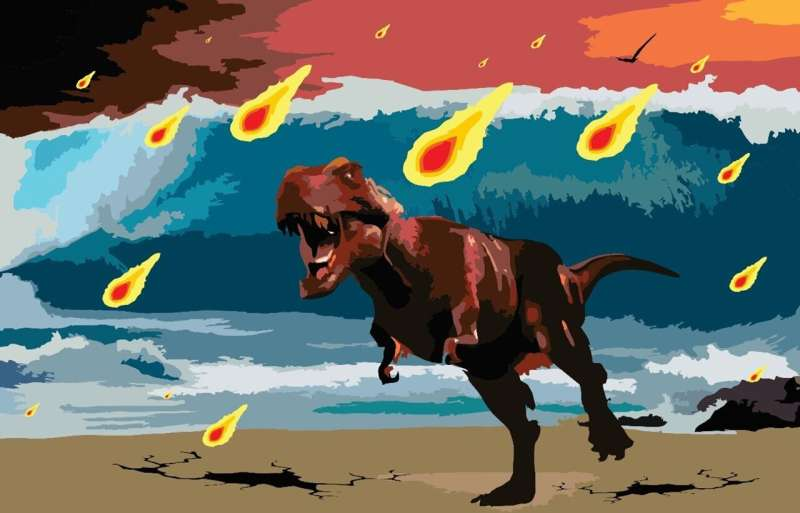A 10-kilometer asteroid blasted Earth about 66 million years ago, prompting the dinosaurs to become extinct. As per new evidence, the huge Chicxulub impact triggered an enormous earthquake that rattled the Earth for several weeks to months following the impact. Overall energy that is released in this "mega-earthquake" is believed to be 1023 joules, which is approximately 50,000 times greater energy than the magnitude 9.1 Sumatra earthquake in 2004.
Hermann Bermudez shall present the information of this "mega-earthquake" at this Sunday's Geological Society of America or GSA Connects conference in Denver. This year, Bermudez explored outcrops of the notorious Cretaceous-Paleogene (K-Pg) massive extinction level event boundaries in Texas, Alabama, and Mississippi to collect data, complementing his past work in Colombia as well as Mexico recording findings.
Presenting Gathered Evidence
Bermudez unearthed spherule deposits in 2014 while trying to conduct field studies on Colombia's Gorgonilla Island. Spherule reserves are layer upon layer of soil particles containing small glass tubes (as huge as 1.1 mm) but also remnants are known as "tektites" and "microtektites" that have been repelled further into surrounding air throughout an asteroid strike. Those glass beads produced as the impact's warmth and pressure blasted and dispersed the Earth's crust, releasing tiny, molten lumps into the atmosphere, eventually falling back onto the surface as glassware because of gravity.
Those rocks revealed on Gorgonilla Island's coastline convey a tale first from the bottom of the seafloor 2 kilometers underwater. Sand, silt, and small sea critters began accumulating on the beach some 3,000 kilometers southwest of the point of impact, as reported by EurekAlert.
Faults and deformation caused by vibration continue climbing on through a spherule-rich layer deposited after the impact, implying that the shaking might have lasted for the weeks to months it required for all these extremely fine sediments to reach the bottom of the ocean. Maintained fern spores over those spherule deposits suggest the first signs of plant life shortly after the impact.
"The portion I uncovered on Gorgonilla Island seems to be a perfect area to examine the K-Pg border since it is one of the finest and because it was positioned deep into the ocean, so it was not impacted by tsunamis," Bermudez comments.

ALSO READ: Fish Bones Reveal Dinosaur-Killer Chicxulub Hit the Earth During Spring 66 Million Years Ago
Series of Date of Data Presentation
Remnants of the mega-deformation earthquake are also documented in the United States and Mexico. Bermudez discovered liquefaction at the El Papalote site in Mexico, where intense trembling caused water-saturated layers to stream like a liquid, as stated in the Ph.D. student's published work.
Bermudez observed fissures and fractures that were most probably triggered by the mega-quake in Mississippi, Alabama, and Texas. He reportedly observed tsunami sediments at many outcrops, which were left by a giant wave that had been part of the asteroid collision's cascading devastation.
On Sunday, October 9, Bermudez will speak on the probability of the mega-earthquake at the GSA Connects meeting.
On Monday, October 10, he will exhibit a presentation in English, Spanish, Italian, and French, as well as Chinese describing his observation of tsunami deposits, including earthquake-related distortion. He highlighted the significance of teamwork in traveling and analyzed the many outcroppings that portray the tale of this tragic incident in geological history while describing his studies, as reported by Science Daily.
RELATED ARTICLE: Fragment of Dinosaur-Killing Asteroid And More Found in North Dakota Fossil Site, Will Tell Impact of Chicxulub on Earth, Paleontologist Says
Check out more news and information on Dinosaurs, Extinction, and Chicxulub's Impact in Science Times.
© 2026 ScienceTimes.com All rights reserved. Do not reproduce without permission. The window to the world of Science Times.










